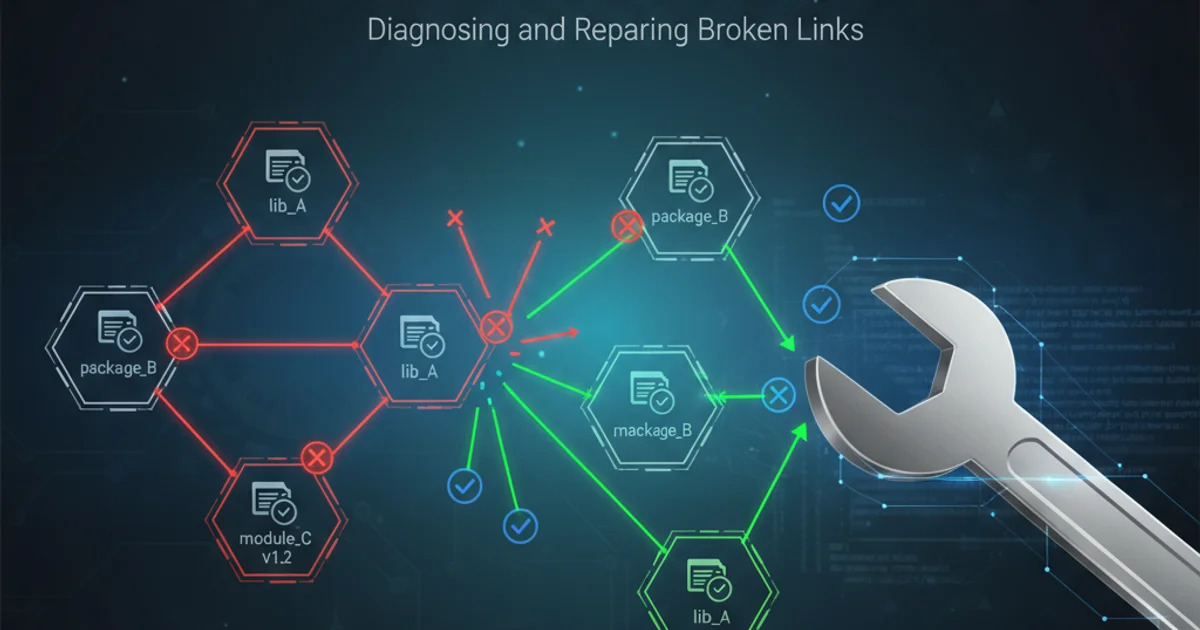Dependency Resolution Fails on Installed Library
Categories:
Resolving RPM Dependency Failures for Installed Libraries

Learn to diagnose and fix common RPM dependency resolution issues when installing or updating packages, focusing on scenarios where libraries are already present but not recognized.
RPM (Red Hat Package Manager) is a powerful package management system used by Red Hat Enterprise Linux, CentOS, Fedora, and other distributions. While generally robust, users occasionally encounter dependency resolution failures, especially when attempting to install or update packages that rely on libraries already present on the system. This article will guide you through understanding why these failures occur and provide practical solutions to resolve them.
Understanding RPM Dependency Resolution
RPM packages declare their dependencies, which are typically other packages or specific library versions. When you try to install an RPM, the package manager (like yum or dnf) checks if all declared dependencies are met. If a required library or package is missing, or if the installed version doesn't satisfy the dependency's version constraints, the installation fails. This mechanism ensures system stability by preventing software from being installed in an environment where it cannot function correctly.
Common reasons for dependency failures include:
- Missing Libraries: The required library is simply not installed.
- Version Mismatches: An older or newer version of a library is installed than what the new package requires.
- Conflicting Packages: Two packages provide the same functionality or library, leading to a conflict.
- Corrupted RPM Database: The local RPM database might be inconsistent, leading to incorrect dependency checks.
- Third-Party Repositories: Mixing packages from different, potentially incompatible repositories can introduce conflicts.
flowchart TD
A[Start RPM Installation] --> B{Check Dependencies}
B -->|Dependencies Met| C[Install Package]
B -->|Dependencies Not Met| D[Dependency Failure]
D --> E{Identify Missing/Conflicting Packages}
E --> F[Resolve Issues (Install/Update/Remove)]
F --> ABasic RPM Dependency Resolution Workflow
Diagnosing Dependency Failures
The first step to resolving a dependency issue is accurately diagnosing its root cause. RPM and its front-ends (yum, dnf) usually provide informative error messages. Pay close attention to these messages, as they often pinpoint the exact missing library or conflicting package.
For example, an error might look like this:
Error: Package: mypackage-1.0-1.x86_64 requires libsomething.so.2()(64bit), but none of the providers can be installed
This message indicates that mypackage needs libsomething.so.2 (a 64-bit version), but the system cannot find a package that provides it. Even if libsomething.so.1 is installed, it won't satisfy the dependency for libsomething.so.2.
sudo yum install mypackage
# OR
sudo dnf install mypackage
Attempting to install a package using yum or dnf
Resolving Common Dependency Issues
Once you've identified the problematic dependency, you can employ several strategies to resolve it.
1. Searching for the Missing Library/Package
If a library is reported as missing, use yum provides or dnf provides to find which package provides that specific file or capability.
sudo yum provides 'libsomething.so.2()(64bit)'
# OR
sudo dnf provides 'libsomething.so.2()(64bit)'
This command will list packages that provide libsomething.so.2. You can then install the appropriate package.
2. Updating Existing Packages
Sometimes, an older version of a library is installed, and the new package requires a newer one. Updating your system can often resolve this.
sudo yum update
# OR
sudo dnf update
3. Installing Development Packages
Many libraries have corresponding development packages (e.g., libsomething-devel or libsomething-dev) that provide header files and static libraries, which might be required by some RPMs during installation, even if the runtime library is present.
4. Handling Conflicts and Obsoletes
If two packages conflict, you might need to remove one before installing the other. Use yum remove or dnf remove. Be cautious when removing packages, as it can affect other installed software. yum and dnf are usually good at warning you about such impacts.
5. Cleaning RPM Database
In rare cases, a corrupted RPM database can cause issues. Cleaning the metadata and cache can sometimes help.
sudo yum clean all
# OR
sudo dnf clean all
6. Using --skip-broken or --nobest (Use with Caution)
yum and dnf offer options like --skip-broken or --nobest to try and proceed with installation even if some dependencies cannot be met or if the 'best' candidate package causes conflicts. Use these options with extreme caution, as they can lead to an unstable system if dependencies are truly critical.
sudo dnf install mypackage --skip-broken
--nodeps or --force is highly discouraged. It bypasses dependency checks entirely and almost always leads to a broken system or non-functional software.1. Identify the exact dependency
When an installation fails, carefully read the error message to pinpoint the specific library or package that is missing or causing a conflict. Note down the exact name and version requirement (e.g., libsomething.so.2()(64bit)).
2. Search for providers
Use sudo yum provides 'dependency_name' or sudo dnf provides 'dependency_name' to find which available packages provide the required dependency. This will help you identify the correct package to install.
3. Install or update the dependency
Once you've identified the provider package, install it using sudo yum install provider_package_name or sudo dnf install provider_package_name. If it's a version issue, try sudo yum update or sudo dnf update to ensure all existing packages are up-to-date.
4. Retry the original installation
After resolving the dependency, attempt to install your original package again. If new dependency issues arise, repeat the process.